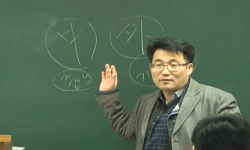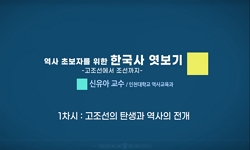In this study, the analysis of the characteristics of production techniques of the plain roof-tiles, a beating patterns in difference eras and examination of the changing process were performed based on the existing analysis and research done during t...
http://chineseinput.net/에서 pinyin(병음)방식으로 중국어를 변환할 수 있습니다.
변환된 중국어를 복사하여 사용하시면 됩니다.
- 中文 을 입력하시려면 zhongwen을 입력하시고 space를누르시면됩니다.
- 北京 을 입력하시려면 beijing을 입력하시고 space를 누르시면 됩니다.
영산강유역 고려시대 평기와 연구 = A Study on the Plain Roof-tiles of the Koryo Dynasty in Yeongsan River Basin
한글로보기https://www.riss.kr/link?id=T12512551
- 저자
-
발행사항
무안 : 목포대학교 대학원, 2011
-
학위논문사항
학위논문(석사) -- 목포대학교 대학원 , 고고인류학과 고고학 , 2011. 8
-
발행연도
2011
-
작성언어
한국어
- 주제어
-
발행국(도시)
전라남도
-
형태사항
82 p ; 26 cm
-
일반주기명
지도교수: 최성락
- 소장기관
-
0
상세조회 -
0
다운로드
부가정보
다국어 초록 (Multilingual Abstract)
In this study, the analysis of the characteristics of production techniques of the plain roof-tiles, a beating patterns in difference eras and examination of the changing process were performed based on the existing analysis and research done during the Kyoro Dynasty in Yeongsan river basin. In addition, the result of the analysis will help us verify the process of technical development as well as regional characteristics. This will further contribute to the first attempt to depict the general characteristics and differences in the field of roof-tiles research.
To do this, the present conditions of the Kyoro dynasty sites in Yeongsan river basin were identified first before subdividing the properties found in the excavated area. The result of the reviewing of these properties was as follows. The flat shape of the a convex roofing tile in non-tiered a convex roofing tile without upper raied spot for put on a convex roofing tile was changed to tiered a convex roofing tile with upper raied spot for put on a convex roofing tile. Also, it has ben identified that a beating patters changed from single pattern to two to three patters in a compound pattern. The production technique also changed from med-sized plate to a floor. Lateral separation method used outer side on one side and the other side used only inner separation method on the inner split.
Inner bottom adjustment was also found to have changed from either non-adjusted or shearing to manual water adjustment. Inner technique also experienced the changing process that can be seen in the inner title similar to the circular wooden case used as make roof tiles change in the horizontal hollow title. Based on these pattern changes and the production technique properties and a beating patterns centered around the analysis in the Koryo dynasty of Yeongsan river district the evidence and the time frame were measured.
The analysis of the excavated sites can be divided into three different stages. First stage, during the first half ninth century through first half tenth century. Second stage, mid tenth century through the first half twelfth century. Third stage, during the mid-twelfth and through chronological years.
The first stage characterizes the usage of the mid-sized a beating being standardized, but the floor a beating also started to emerge during this period. The inner bottom adjustment method used the non-adjustment and shearing adjustment. The flat shape of a convex roofing tile was found only as the non-tiered a convex roofing tile without upper raied spot for put on a convex roofing tile. The changing process of the separation method went through various separation methods such as both sides being the inner sides or one side the inner and the other the outer. In a concave roofing tile, the horizontal hollow which shapes the frame of the circular wooden dase used as make roof tiles was not found and the patter is mostly single door, following the traditions of Three Kingdoms period which maintained the lattice door and linear design. However, we see some changes into lattice design and avertical line design, as well as a phase of sophistication on the surface of a beating patterns. The a pattern of plumage shape started to appear after the eighth century in the form of a single door.
In the second stage, the length of the a beating plate and the usage of the mid-sized plated increased. For the inner bottom adjustment method, we see the appearance of the manual water adjustment and the flat shape tiered a convex roofing tile. The change in the separation method goes through the same phase as the previous stage, but the rate of the inner side is quite high and by the eleventh century, inner separation was standardized. In tiered a convex roofing tile, the horizontal hollow was found, but this predicts the change of the circular wooden dase used as make roof tiles. Also we see the limited patter that is unique in this period. a pattern of plumage shape together with the single door can be seen as compound doors in the form of flip vertical and vertical separation. The second stage, in coexistence with the first, is also known as a period in which the replacement of the new production technique took place as the previous one became extinct.
In the third stage, the production technique was standardized. The length of the a beating plate is only found as floor plate, and even the inner bottom adjustment method is only done through the manual water adjustment. The flat shape of a convex roofing tile coexists as non-tiered a convex roofing tile and tiered a convex roofing tile, but the rate of the tiered a convex roofing tile is higher and the separation method only uses inner separation method. In a concave roofing tile, the horizontal hollow is found as it is in the second stage. For the patterns, the rate of the single door decreases, and we see the change in the patterns centered around the a pattern of plumage shape. Moreover, either two to three patterns are combined or the rate of the geometrical patterns of the compound doors increases together with the a pattern of plumage shape, and by the fourteenth century, we see an appearance of the collective lines.
The shift of the plain roof-tile in difference eras reflect the significant changes in the society and archeological materials, however, the change of the tile is certainly in correlation with the change of the trade system .
국문 초록 (Abstract)
본 연구에서는 기존의 평기와 연구를 바탕으로 고려시대 영산강유역에서 확인되는 평기와의 구체적인 분석을 통하여 시대별 제작기법ㆍ타날문양의 특징을 파악하고, 변화과정을 살펴보고...
본 연구에서는 기존의 평기와 연구를 바탕으로 고려시대 영산강유역에서 확인되는 평기와의 구체적인 분석을 통하여 시대별 제작기법ㆍ타날문양의 특징을 파악하고, 변화과정을 살펴보고자 하였다. 또한 분석결과를 통해 영산강유역 평기와의 기술적 발달과정과 더불어 지역적 성격의 일면을 도출하고자 한다. 이는 향 후, 기와연구에 있어 보편적인 특징과 차이점을 규명하기 위한 첫 단계이기도 한다.
이를 위해 우선적으로 영산강유역에서 확인되는 고려시대 유적 현황을 파악한 후 출토된 평기와에서 보이는 속성 등을 세분하였다. 이들 속성을 검토한 결과 그 특징은 다음과 같다. 수키와의 평면형태는 언강이 없는 토수기와에서 언강이 있는 미구기와로의 변화가 확인되었으며, 타날문양은 단독문에서 2∼3가지 문양이 복합되는 복합문으로의 변화가 확인되었다. 제작기법은 중판에서 장판으로의 변화하였으며, 측면분할방법도 한쪽은 외측 다른 한쪽은 내측분할에서 내측분할방법만 사용하게 되었다. 내면하단부조정도 무조정이거나 깎기에서 물손질 조정으로 변화하였다. 내면기법은 와통의 변화에 따른 윤철흔이 기와 내면에서 확인되는 변화과정을 보이고 있다.
이러한 변화양상을 근거로 영산강유역 고려시대 평기와 출토 유적을 중심으로 제작기법적 속성, 타날문양 등의 분석을 통하여 편년의 근거를 마련하고 시기를 설정하였다. 고려시대 영산강유역의 평기와 출토 유적은 3시기로 구분이 가능하다. 1기는 9세기 전반∼10세기 전반, 2기는 10세기 중엽∼12세기 전반, 3기는 12세기 중엽 이후로 편년하였다.
1기는 중판타날의 사용이 정형화되지만, 장판타날도 등장하게 되는 시기이다. 내면 하단부조정방법은 무조정과 깎기조정을 사용하였다. 수키와의 평면형태는 언강이 없는 토수기와만이 확인되고 있다. 분할방법의 변화는 양면 모두 내측 인 것, 한쪽은 내측 다른 한쪽은 외측인 것 등 다양한 종류의 분할방법이 확인되고 있는 특징을 보이고 있다. 암키와에서는 와통의 형태를 잡아주는 윤철흔이 확인되지 않고 있어 문양은 단독문이 다수를 차지하고 있으며, 삼국시대의 정통을 계속 이어받으면서 격자문, 선조문이 유지되지만, 사격자문, 종선문 등 변형이 나타나며, 평면에 타날문양이 좀 더 촘촘해지는 양상을 보인다. 우상문은 8세기 이후부터 등장하며, 형태는 단독문으로 나타나고 있다.
2기는 타날판의 길이가 중판과 함께 장판의 사용도 늘어나고 있다. 내면 하단부조정방법은 물손질조정과 평면형태는 미구기와가 등장하게 되는 시기이다. 분할방법의 변화는 전시기와 같은 양상이 나타나고 있지만, 모두 내측의 비율이 높으며, 11세기가 되면 내측분할로 정형화가 된다. 암키와에서는 윤철흔이 확인되는데, 이는 와통의 변화가 이루어졌을 것으로 판단된다. 이시기에만 보이는 한정적인 문양이 등장하게 되며, 우상문은 단독문과 더불어 기본형을 중심으로 상하대칭, 상하분리 형태의 복합문이 확인된다. 2기에서는 1기와 공존하면서 이전의 것은 점차적으로 소멸하고 다음의 새로운 제작기법이 교체되는 시점이기도 하다.
3기는 제작기법이 정형화되는 단계이다. 타날판의 길이가 장판타날만 확인되며, 내면하단부조정방법도 모두 물손질조정만이 이루어진다. 수키와 평면형태는 토수기와와 미구기와가 공존하지만, 미구기와의 비율이 높으며, 분할방법도 모두 내측분할만을 사용하게 된다. 암키와에서는 2기와 같이 윤철흔이 확인된다. 문양은 단독문의 비율이 낮아지며, 대부분은 우상문을 중심으로 문양의 변화가 나타나게 된다. 또한 2∼3개의 문양이 복합되거나, 기하학적인 문양인 복합문도 우상문과 더불어 그 비율이 늘어나고, 14세기가 되면 집선문이 등장하게 된다.
각 시기별 평기와는 급격한 사회변화로 고고학적 물질문화에 그대로 반영되어 나타나게 되는데, 기와의 변화는 국가의 수공업체제의 변화와 상관관계를 가지고 변화하고 있음을 알 수 있었다.
목차 (Table of Contents)
- ABSTRACT
- 제 1장 머리말 1
- 제1절 연구사 1
- 1. 제작기법 연구 2
- ABSTRACT
- 제 1장 머리말 1
- 제1절 연구사 1
- 1. 제작기법 연구 2
- 2. 타날문양 연구 3
- 제2절 연구목적과 방법 4
- 제 2장 유적 현황과 출토기와 양상 6
- 제 3장 영산강유역 평기와의 속성과 편년 17
- 제1절 평기와의 속성분류 17
- 1. 형태적 속성 17
- 2. 문양적 속성 24
- 3. 제작기법적 속성 32
- 제2절 속성분류 및 편년 43
- 1. 속성분류 43
- 2. 편년 48
- 제 4장 기와 제작실험을 통한 영산강유역 평기와 성격 58
- 제1절 시기별 평기와의 변천과 사회변화 58
- 1. 1기(고려시대 초기) 58
- 2. 2기(고려시대 전기) 60
- 3. 3기(고려시대 후기) 61
- 제2절 제작실험 과정을 통한 기와 제작기법 64
- 1. 복원 제작의 목적과 방법 64
- 2. 실험 과정 64
- 3. 기와제작 실험 내용 65
- 4. 실험 결과 74
- 제 5장 맺음말 77
- 참고문헌 80












